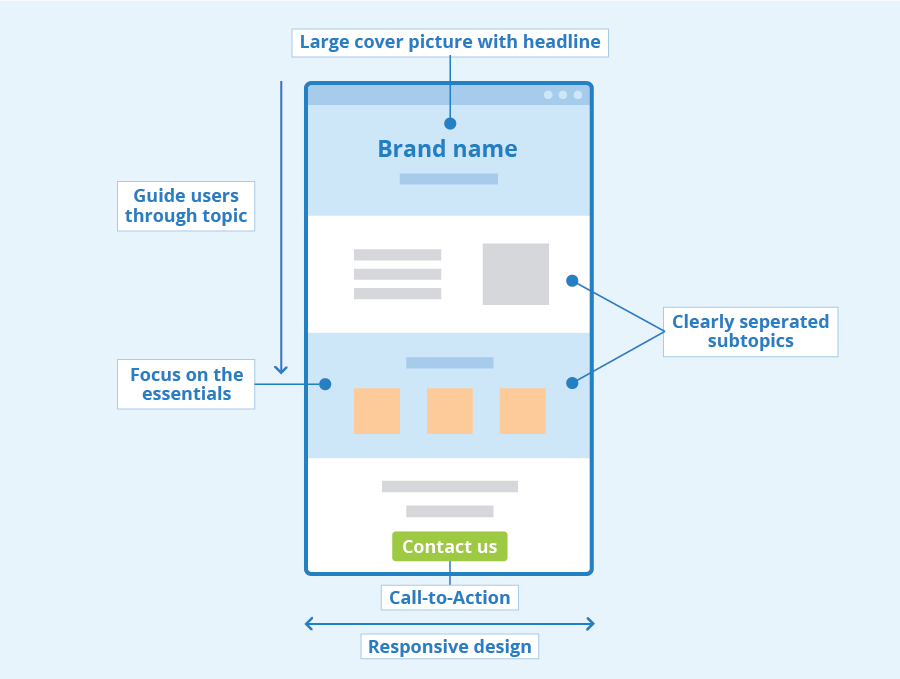In the digital age, accessibility is a key component of web design and development. Ensuring that websites and applications are usable by everyone, including people with disabilities, is not just a moral obligation but a legal one in many parts of the world. One crucial aspect of accessibility that often goes overlooked is keyboard accessibility. This blog post will explore the importance of keyboard usability, the principle of device independence, the impact of accessibility on various disabilities, and practical steps to improve keyboard accessibility on your website.
Introduction
The internet is a vast, inclusive space designed to be accessible to all. However, the reality is that many websites and applications are still not fully accessible, particularly for individuals who rely on keyboard navigation. Keyboard accessibility is essential for ensuring that users can interact with digital content without being limited by the type of input device they use. This includes users with physical disabilities, visual impairments, and other conditions that make using a mouse difficult or impossible.
Why Device Independence is Important
The Principle of Device Independence
Device independence refers to the ability of users to interact with a website or application using various input methods. This could be a keyboard, screen reader, voice control, or other assistive technologies. The goal is to ensure that the user experience remains consistent and functional regardless of the input device.
Keyboard accessibility is a subset of this principle, focusing on making sure that all interactive elements on a web page can be accessed and operated using only a keyboard. This is critical because many users with disabilities rely solely on their keyboards for navigation.
Benefits of Device Independence
- Inclusivity: Device independence ensures that your website can be used by everyone, including people with disabilities. This broadens your audience and promotes inclusivity.
- User Experience: A keyboard-accessible website is often more user-friendly for all visitors. Efficient keyboard navigation can enhance the user experience by providing quick and easy access to different parts of your website.
- Legal Compliance: Many countries have regulations mandating web accessibility. By ensuring device independence, you can avoid legal issues and potential fines.
- SEO Benefits: Search engines favor websites that are accessible, as they are more likely to be user-friendly. Improved keyboard accessibility can contribute to better search engine rankings.
Impact of Accessibility on Various Disabilities
Physical Disabilities
For individuals with physical disabilities, such as limited motor control or paralysis, using a mouse may not be an option. These users rely on keyboard navigation or alternative input devices that mimic keyboard functionality. Without keyboard accessibility, these users are effectively barred from interacting with web content.
Visual Impairments
Users with visual impairments often use screen readers to navigate websites. These screen readers depend heavily on keyboard navigation to move through web content. If a website is not keyboard accessible, it becomes challenging for screen readers to function effectively, making it difficult for visually impaired users to access information.
Cognitive Disabilities
Some users with cognitive disabilities may find it easier to use a keyboard rather than a mouse due to the simplicity and predictability of keyboard commands. Consistent and logical keyboard navigation can help these users interact with web content more comfortably.
Common Keyboard Accessibility Problems and Solutions
Problem 1: Inaccessible Forms
Forms are a common element on many websites, and they often pose significant challenges for keyboard users. An inaccessible form might lack proper tab order, making it difficult for users to navigate through fields using the keyboard.
Solution: Ensure that form fields are logically ordered in the HTML so that the tab order follows a natural sequence. Using the default tab order is typically best, as it ensures consistency and predictability for users. Explicitly setting tabindex values greater than zero is discouraged because it can lead to confusing and inconsistent navigation experiences.
<label for="name">Name:</label>
<input type="text" id="name" name="name">
<label for="email">Email:</label>
<input type="email" id="email" name="email">Problem 2: Non-Interactive Elements with Interactive Roles
Sometimes, developers use non-interactive elements like div or span for interactive purposes, such as clickable buttons or links. These elements are not natively focusable via the keyboard, which can create significant accessibility barriers.
Solution: Use semantic HTML elements that are natively interactive, such as button and a. If you must use non-interactive elements for some reason, ensure they are focusable and can be activated using the keyboard.
<button onclick="submitForm()">Submit</button>
<a href="#section" onclick="navigateToSection()">Go to Section</a>Problem 3: Lack of Focus Indicators
Focus indicators highlight the element that is currently selected by the keyboard. Without visible focus indicators, users can become disoriented, not knowing which element they are interacting with.
Solution: Ensure that all focusable elements have visible focus indicators. This can be achieved using CSS to style the :focus pseudo-class.
button:focus,
a:focus,
input:focus {
outline: 2px solid blue; /* or any other visible style */
}Problem 4: Keyboard Traps
A keyboard trap occurs when a user can navigate into a part of the web page using the keyboard but cannot navigate out of it. This often happens with modal dialogs or dynamic content.
Solution: Ensure that users can navigate out of all interactive elements using the keyboard. For modal dialogs, focus should be trapped within the dialog while it is open, but users must be able to close the dialog using the keyboard.
document.addEventListener('keydown', function(event) {
if (event.key === 'Escape') {
closeModal();
}
});Implementing Keyboard Accessibility
Conducting Accessibility Audits
Regularly auditing your website for accessibility issues is crucial. This can be done using automated tools like Axe or Lighthouse, which can identify common accessibility problems. However, manual testing is also necessary to ensure that your website is fully accessible to keyboard users.
Involving Users with Disabilities
One of the best ways to ensure your website is accessible is to involve users with disabilities in the testing process. Their feedback can provide valuable insights into the usability of your site and highlight issues that automated tools might miss.
Providing Clear Instructions
Make sure that any interactive elements on your website come with clear instructions on how to use them with a keyboard. This can be particularly important for complex interactions, such as drag-and-drop or custom widgets.
Using ARIA (Accessible Rich Internet Applications)
ARIA can be used to enhance the accessibility of dynamic content and custom widgets. However, it should be used cautiously and as a last resort, only when native HTML elements cannot provide the required functionality.
<div role="dialog" aria-labelledby="dialogTitle" aria-describedby="dialogDescription">
<h2 id="dialogTitle">Dialog Title</h2>
<p id="dialogDescription">This is a dialog description.</p>
<button onclick="closeDialog()">Close</button>
</div>Conclusion
Keyboard accessibility is a fundamental aspect of web accessibility that ensures users can interact with your website regardless of their input device. By implementing keyboard-friendly design practices, you can create a more inclusive and user-friendly web experience. Ensuring device independence not only benefits users with disabilities but also enhances the overall usability and accessibility of your website.
For more information on how to implement keyboard accessibility on your website, feel free to contact us. Our team of experts is ready to help you create an inclusive and accessible digital experience for all users.







